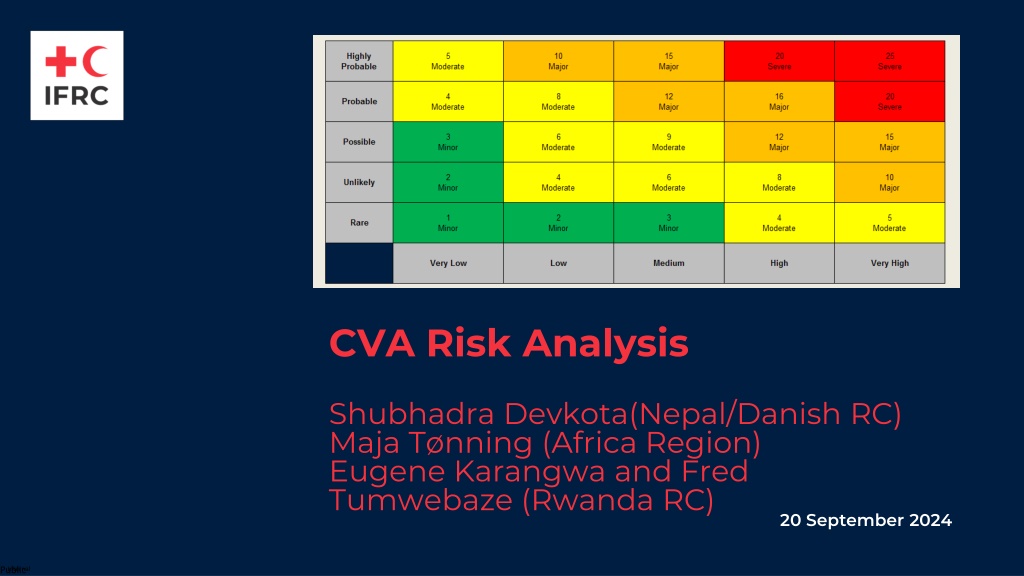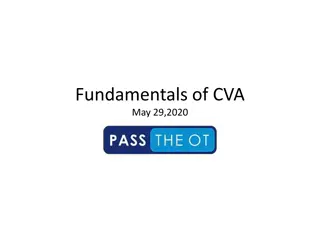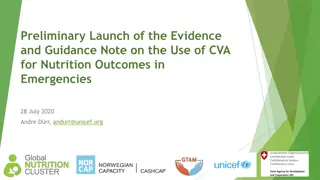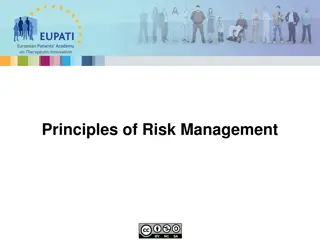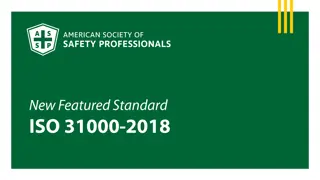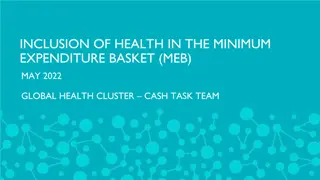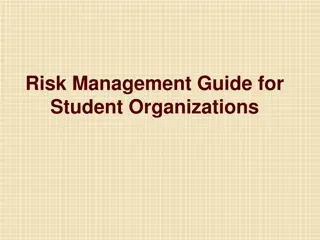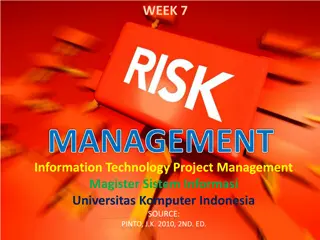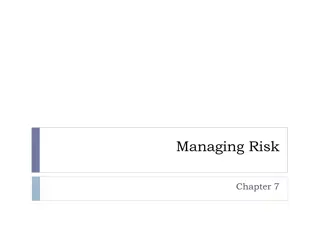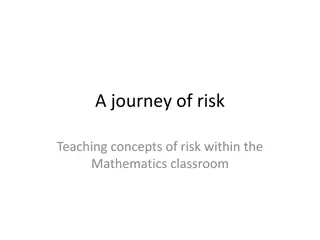Comprehensive CVA Risk Analysis and Management Overview
This detailed document delves into the importance of CVA Risk Analysis, introducing the CVA risk register and outlining the identification, mitigation, and management of risks. It emphasizes understanding root causes and gaining confidence in filling the Risk Register. Additionally, it discusses the risks associated with providing resources in unstable environments and highlights the Risk Equation. Typical risks in CVA are also explored, along with the significance of risk analysis in ensuring better and quality CVA programming, selecting appropriate response options, and avoiding negative impacts on both recipients and personnel.
Download Presentation

Please find below an Image/Link to download the presentation.
The content on the website is provided AS IS for your information and personal use only. It may not be sold, licensed, or shared on other websites without obtaining consent from the author. Download presentation by click this link. If you encounter any issues during the download, it is possible that the publisher has removed the file from their server.
E N D
Presentation Transcript
CVA Risk Analysis Shubhadra Devkota(Nepal/Danish RC) Maja T nning (Africa Region) Eugene Karangwa and Fred Tumwebaze (Rwanda RC) 20 September 2024 Internal Public
Learning session objectives Understand the importance of CVA Risk Analysis Get introduced to the CVA risk register including; Identification of risks in CVA Mitigation and management of risks Understanding root causes Gain confidence to fill the Risk Register Internal Public
Learning session objectives Understand the importance of CVA Risk Analysis Get introduced to the CVA risk register including; Identification of risks in CVA Mitigation and management of risks Understanding root causes Gain confidence to fill the Risk Register Internal Public
Risk analysis related to CVA Providing any sort of resources in unstable environments is risky ( ) This is a central dilemma of humanitarian action the risks of doing something need to be balanced against the humanitarian imperative to act in the face of avoidable suffering and the risks of doing nothing. Cash does NOT fundamentally change this dilemma but may present new types of risk and new opportunities for mitigating them. (ODI High Level Panel on Humanitarian Cash Transfers) Restricted
Risk equation = Threat x Vulnerability Capacity Hazard Risk Disaster Restricted
Typical risks raised in CVA (BUT ALSO RELEVANT TO IN-KIND DISTRIBUTIONS) Preference Access Corruption, theft and fraud Social Relations Data protection and KYC Markets Communicating cash transparently Acceptance Staff and beneficiary safety Restricted
Importance of Risk analysis in CVA Better & quality CVA programming (effective efficient and relevant) To select the right response options and delivery mechanisms To meet project objectives / to achieve project targets To avoid negative impact/harm to recipients/target groups To avoid negative impact to the personel ( staff and volunteers, governance) of the organisation (funding sources reputation, acceptance, images) Internal Public
Impact of risks to CVA Unable to meet Project objectives Unable to achieve the project targets Negative impact/harm to recipients/target groups, Negative impact to the personel ( staff and volunteers, governanace) of the organisation, Negative impact to institution (funding sources reputation, acceptance, images) Negative impact to the market system Internal Public
Risk Management: responsiblity and steps Identify all types of risk (8 types) Phase 1 Assess and analyze Phase 2 Identify and design mitigation plan Phase 3 Implement the mitigation plan Phase 4 Monitoring and follow up Phase 5 Internal Public
Resources used in designing the CVA Risk Register International Red Cross and Red Crescent Movement - Cash in Emergencies Toolkit Risk Register, Africa Region IRC 2019 Safer Cash toolkit UNHCR WFP 2019 mitigating Risk of Abuse of Power in Cash Assistance UNHCR CVA protection Risk and benefits Analysis Tool UNHCR ERC guidance to Managing Protection Risk in CVA Programme Practical Guidance for Data Protection in Cash and Voucher Assistance IFRC CaLP Online: Core CVA Skills for Programme Staff ( Risk Analysis) Coordination with Risk Advisor, PGI advisor of the Africa Region, and Data Protection Advisor from Geneva. Active involvement of three ( Ghana, Rwanda, Nigeria) NS of the region and CVA advisor of the region, Zambia RC Internal Public
Suggested next steps for the NS to do CVA risk Analysis Organize CVA risk Analysis and Risk register briefing session to cash Technical working group (TWG) and support service team (finance, PMER, DM, PGI, CEA, Logistic, IT/IM) Organize risk analysis working session with TWG and support service to contextualize the pre-identified information in risk register Organize CVA risk Analysis and Risk register briefing session to volunteers involved in cash, and local/unit/branch-level cash focal person Organize risk analysis working session with volunteers involved in cash & local/unit /branch level cash focal person to contextualize the pre- identified information in risk register Compile suggestions and inputs from all working sessions and prepare a final draft risk register Share with governance and/or management as required Continue monitoring and update the register on quarterly basis. Internal Public
Thank you! https://cash-hub.org/ https://rcmcash.org/ Contact: Maja.Tonning@ifrc.org Please reach out for technical inputs, FSP procurement, online learning Internal Public
